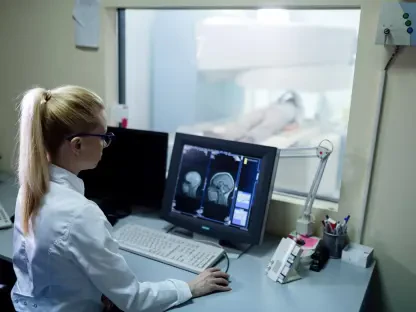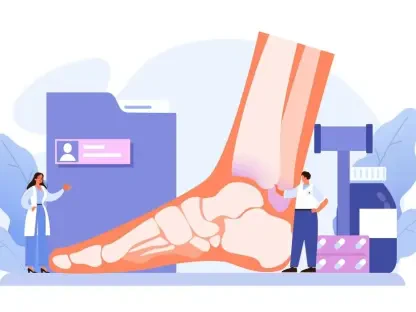The Ministry of Health (MOH) in Malaysia is embarking on a significant digital transformation initiative by transitioning to off-the-shelf, cloud-based electronic medical record (EMR) systems for public hospitals and health clinics. This move, as disclosed by Dr. Mahesh Appannan, the director of digital health at the ministry, aims to enhance efficiency and capability in managing patient records across the healthcare system. The implementation will follow a subscription-based model, which is seen as a more manageable and efficient alternative to developing custom-built systems.
Strategic Shift to Cloud-Based EMR Systems
Rationale Behind the Transition
The decision to opt for market-available solutions over custom-built systems stems from the rapid advancements and complexities in technology. According to Dr. Mahesh, developing and maintaining custom systems would require significant capacity, which currently exceeds MOH’s resources. Instead, subscribing to existing cloud EMR systems is seen as a more manageable and efficient alternative. Cloud solutions offer a scalable and cost-effective way to keep up with technological advancements without the need for continuous, substantial investments in IT infrastructure and personnel training.
Despite this reliance on external vendors for the infrastructure, MOH maintains ownership and control over all data, storage, and other specifications. This approach allows for flexibility; for instance, the ministry could migrate data to a better system in the future, provided standard protocols are followed. This ensures data sovereignty and compliance with regulatory requirements while still benefiting from the technological expertise of specialized vendors. By strategically choosing cloud-based systems, MOH can ensure data security and integrity, while also being able to take advantage of future technological improvements more readily.
Benefits of Cloud-Based EMR Systems
The move towards digitization is partly inspired by the advancements in artificial intelligence (AI) within contemporary EMR systems, which now routinely include clinical decision support features. Such features can alert healthcare providers to critical patient information such as allergies, enhancing patient safety and care quality—functionality that would be overly complicated for the MOH to develop in-house. These smart systems can analyze patient data in real-time, providing actionable insights and assisting healthcare professionals in making more informed decisions, thereby improving overall patient outcomes.
Dr. Mahesh’s remarks were in response to queries from Dr. Zulkafperi Hanapi, a member of the Health PSSC, who questioned why the MOH does not create a unified proprietary system similar to other government initiatives. While acknowledging the benefits of a unified system, Dr. Mahesh and other officials emphasized the practicality and efficiency of using established market solutions. The time and resources required to develop and maintain a cohesive, in-house system are extensive and would likely delay the implementation of essential digital transformations that are urgently needed in Malaysia’s healthcare sector.
Current State of EMR Adoption in Malaysia
Low Adoption Rates and Urgency for Digital Transformation
Currently, only a small fraction of Malaysia’s public healthcare facilities have adopted EMR systems. A mere 14 percent of public hospitals, 18 percent of health clinics, and 10 percent of dental clinics have digitized their records. The majority still rely on manual processes, underscoring the urgency for digital transformation. Without digital records, healthcare providers face challenges in accessing patient history promptly, which can lead to inefficiencies in patient care and administrative processes. Thus, the move towards EMR systems is deemed critical to modernizing and streamlining healthcare delivery in the country.
In line with the 12th Malaysian Plan, the federal government has allocated funds to digitize 16 hospitals by 2024, including Kuala Lumpur Hospital. Further funding under the 13th Malaysian Plan will aim to expand digitization to more significant state hospitals and ultimately all public health facilities by 2028. This phased approach considers both financial and logistical constraints, making the transition manageable over time. By spreading out implementation, MOH can ensure that infrastructure is built progressively and that staff are adequately trained to use the new systems effectively.
Financial and Logistical Challenges
Implementing cloud-based EMR systems requires comprehensive budget allocations not just for the software subscriptions but also for equipping health facilities with the necessary hardware, such as computers. This incremental rollout prevents overwhelming financial strain on the MOH and government resources. Allocating resources efficiently ensures that the quality of healthcare is not compromised while upgrading to a more advanced system. Additionally, ongoing maintenance and periodic upgrades will need to be factored into the budget to sustain the efficiency of the EMR systems.
A significant anticipated benefit of transitioning to digital systems is the reduction of administrative burdens on healthcare workers, particularly nurses. Currently, a substantial portion of their duties involves manual record-keeping tasks, a process described as time-consuming and cumbersome. The new digital systems aim to automate these tasks, freeing up nurses to focus more on patient care. Automation of paperwork through EMR systems can also reduce the likelihood of human error, ensuring that patient records are accurately kept and easily accessible, aiding in better patient management.
Addressing Administrative Burdens on Healthcare Workers
Impact on Nurses and Healthcare Providers
During a discussion with a nurses’ association, Health PSSC chairman Suhaizan Kaiat highlighted the administrative challenges faced by nurses, noting that 80 percent of their duties reportedly involve record-keeping. While Health director-general Dr. Muhammad Radzi Abu Hassan acknowledged the administrative load, he suggested the 80 percent figure might be an overestimate, yet he conceded that the task remains demanding regardless. The reliance on manual documentation has not only been burdensome but also detracted from the time available for direct patient care, highlighting the critical need for a digital overhaul.
The potential for digital systems to alleviate the administrative burden on healthcare workers is a significant driving force behind the MOH’s push for EMR adoption. By automating manual record-keeping tasks, healthcare providers can dedicate more time to patient care, ultimately improving the quality of healthcare services. This shift not only benefits healthcare professionals by allowing them to utilize their skills more effectively but also improves patient satisfaction and outcomes due to more focused and efficient care delivery.
Long-Term Vision and Global Trends
The Ministry of Health (MOH) in Malaysia is set to undergo a significant digital transformation by transitioning to cloud-based, off-the-shelf electronic medical record (EMR) systems for public hospitals and health clinics. Dr. Mahesh Appannan, the director of digital health at the MOH, has disclosed that this strategic move is aimed at enhancing both efficiency and capability in managing patient records throughout the country’s healthcare network. The new EMR system will be implemented on a subscription-based model, which is considered a more manageable and efficient alternative to developing custom-built systems from scratch. This approach allows for quicker implementation, reduced upfront costs, and easier maintenance since updates and improvements can be seamlessly integrated by the service providers. By adopting this model, the MOH hopes to streamline healthcare processes, improve patient care, and ensure better data management. This initiative represents a critical step forward in modernizing the Malaysian healthcare infrastructure, aligning it with global best practices.









